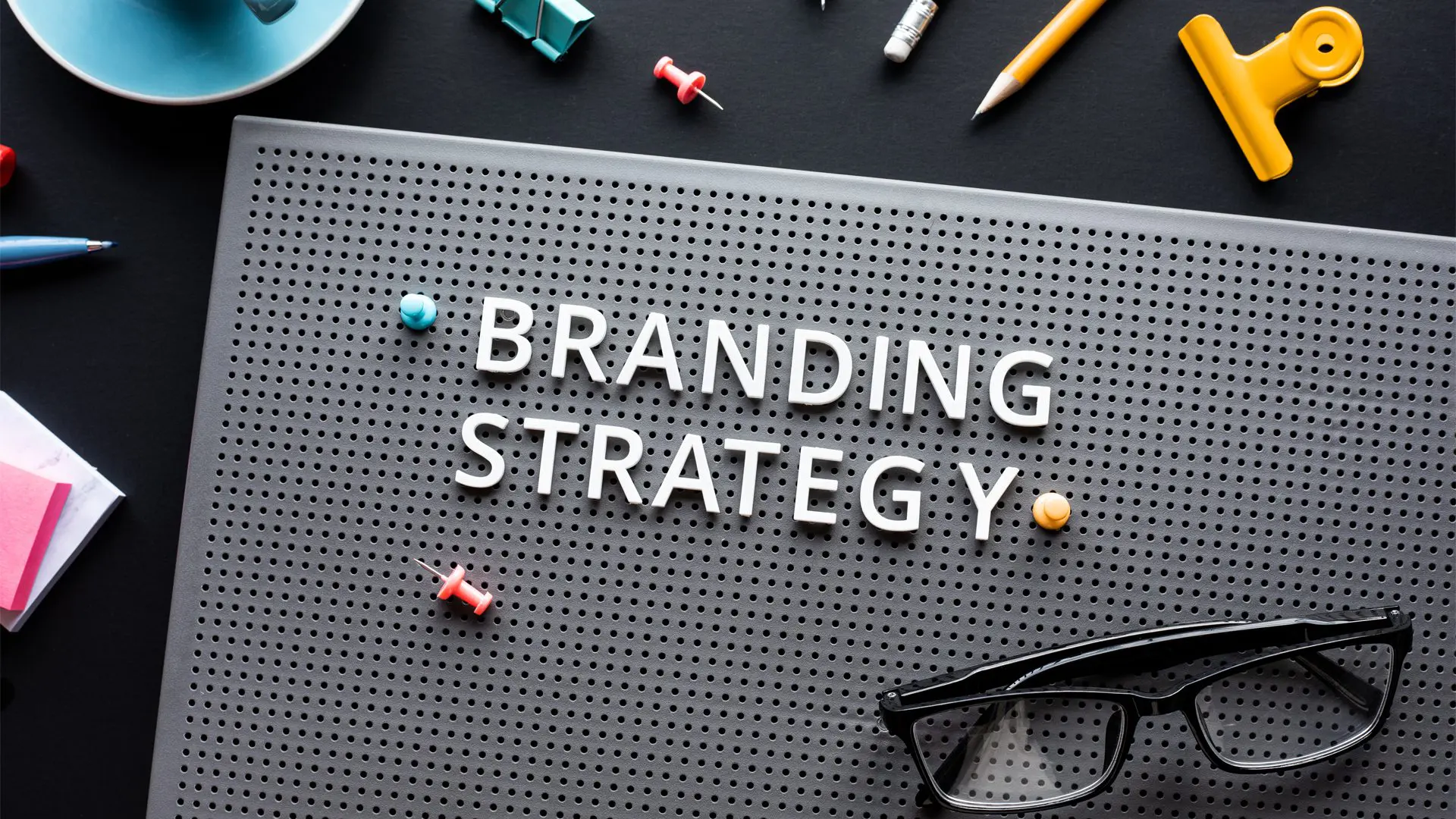8 Reasons Why Brands are Assets
Branding has always been a vital part of business, but it is more important now than ever before. On the outside, your brand may seem like it consists only of elements such as logos and colours, but your brand is the entire experience of your business. There is a huge amount of competition today, so businesses need to go the extra mile of ensuring they stand out in a crowd. With the right branding strategy, it brings dividends to both internal and external aspects of business.
Here are 8 reasons why branding is both a tangible and intangible asset for your business.
Leadership
Strong brands attract eminent leaders with strong expertise in their fields. At the core of every strong organization, there are strong leaders. Organizational leaders provide the vision needed for making vital decisions as well as set the direction for the overall business. A good leader can communicate the goals of the organization and align individual goals and aptitudes with the group’s purpose. This sets a strong foundation in instilling an internal identity, vision and mission amongst its leaders and employees. Moreover, this strengthens the company’s strategic capabilities and abilities to manoeuvre business management and dealings.
For instance, Starbucks’ Transformational leadership led by Kevin Johnson has successfully built a strong identity for the company as advocates for conscious capitalism through their product offerings and employee practices. This allowed Starbucks to reach an increasingly socially conscious consumer globally, transforming what once was a small chain into the international behemoth it is today.
Management
Strong brands attract highly capable managers who can drive growth and create value for all stakeholders. Effectively aligning the brand identity with overall organizational goals allows businesses to build trust and confidence amongst both internal and external stakeholders. It becomes a business manager’s obligation to shareholders to maintain the brand’s equity and value through design, innovation, and advertising to continuously build trust and confidence.
Human Resource
Employer Branding has been at the forefront of human resource. With the global War of Talent and businesses scrambling to attract and retain their best employees, it is key for businesses to reimagine their employee value proposition. Here are ways branding provides substantial value to Human Capital Management:
Firstly, recruitment. Most job seekers will look at your company’s social profiles before applying. Especially during the digital era, utilize your company’s social profiles (Facebook, LinkedIn, Instagram) to build a strong online presence and identity as well as project an employee-centric culture. More than 50% of job seekers rely on employee reviews. It is key to create a positive impression and community surrounding your brand.
Secondly, talent engagement and retention. When your organization commits to an employee-centric company brand, this intentionally engages employees to become an intrinsic component of your company culture. With that, this results in overall increased productivity and profits as well as reduced costs due to lower turnover rates.
Marketing
Your brand serves as a guide to understanding the purpose of your key marketing strategies. Strong brands sell easier as they have stronger awareness and trust with their customers. It provides strong differentiation and a competitive edge to your business, allowing for higher market awareness and penetration. Furthermore, the brand experience stays throughout the whole customer journey. A consistent brand coupled with effective marketing strategies will lead to customer loyalty and retention.
Operations
Consistent and cohesive brands are of better quality as production, operations and supply chains must comply and fulfil the desired standards of quality in alignment with the brand. This enables trust and confidence in customers, encouraging repurchases and Word-of-Mouth recommendations. It also brings about higher ROI, profitability and cost-effectiveness to your business’ production processes.
Supply Chain
World-class supply chains embody world-class brands. This includes the ability to efficiently mobilize products that enables on-time deliveries and continuously meet the supply and demand of the market. Strong brands can command better contractual terms from their sub-contractors and vendors. This improves the brands’ operational efficiency and cost savings.
Innovation
In a world of abundant choice, the purpose of branding is to guide consumers amidst a dizzying array of alternatives. Strong brands are highly differentiated in nature, and the culture of a strong brand will continue to drive innovations in its business, products, and services. Brands that do not rest on their laurels, but rather push the status quo can continuously engage and meet the needs of their customers, cementing emotional bonds and making the competition irrelevant.
Intellectual Property
Well-established and respected companies leverage the strength of their trademarks to sell product lines. Brand value companies rely on years of carefully building their brand recognition, reputation, and style to make their products popular, respected, and recognizable. Having a strong brand strategy and identity are valuable intellectual properties that can be protected from competitors, attract investments, and attain monetization.
Intellectual property is a non-physical property of a business that is legally protected and enforced in a court of law. Intellectual Properties generates a measurable amount of economic benefits to its owner, enhancing the value of the asset as well as other related assets. Moreover, it allows owners to sell or license the Intellectual property to a third party which raises the barriers to entry to reduce the threat of substitutes.
Brand building and brand asset management are important cornerstones of your organisation. Making branding your top priority means taking the time to focus on driving sustained profitable growth.
Prefer to have an approved branding consultant work on your brand with you?
At Creativeans, we pride ourselves on our interdisciplinary approach to design and branding, and continuously keep up to date with the latest consumer trends, solving their strategic and creative challenges. Guided by our systematic approach and methodologies such as BrandBuilder® and EDIT™ Design Thinking, we help SMEs build brands that matter.
Branding has always been a vital part of business, but it is more important now than ever before. On the outside, your brand may seem like it consists only of elements such as logos and colours, but your brand is the entire experience of your business. There is a huge amount of competition today, so businesses need to go the extra mile of ensuring they stand out in a crowd. With the right branding strategy, it brings dividends to both internal and external aspects of business.
Here are 8 reasons why branding is both a tangible and intangible asset for your business.
Leadership
Strong brands attract eminent leaders with strong expertise in their fields. At the core of every strong organization, there are strong leaders. Organizational leaders provide the vision needed for making vital decisions as well as set the direction for the overall business. A good leader can communicate the goals of the organization and align individual goals and aptitudes with the group’s purpose. This sets a strong foundation in instilling an internal identity, vision and mission amongst its leaders and employees. Moreover, this strengthens the company’s strategic capabilities and abilities to manoeuvre business management and dealings.
For instance, Starbucks’ Transformational leadership led by Kevin Johnson has successfully built a strong identity for the company as advocates for conscious capitalism through their product offerings and employee practices. This allowed Starbucks to reach an increasingly socially conscious consumer globally, transforming what once was a small chain into the international behemoth it is today.
Management
Strong brands attract highly capable managers who can drive growth and create value for all stakeholders. Effectively aligning the brand identity with overall organizational goals allows businesses to build trust and confidence amongst both internal and external stakeholders. It becomes a business manager’s obligation to shareholders to maintain the brand’s equity and value through design, innovation, and advertising to continuously build trust and confidence.
Human Resource
Employer Branding has been at the forefront of human resource. With the global War of Talent and businesses scrambling to attract and retain their best employees, it is key for businesses to reimagine their employee value proposition. Here are ways branding provides substantial value to Human Capital Management:
Firstly, recruitment. Most job seekers will look at your company’s social profiles before applying. Especially during the digital era, utilize your company’s social profiles (Facebook, LinkedIn, Instagram) to build a strong online presence and identity as well as project an employee-centric culture. More than 50% of job seekers rely on employee reviews. It is key to create a positive impression and community surrounding your brand.
Secondly, talent engagement and retention. When your organization commits to an employee-centric company brand, this intentionally engages employees to become an intrinsic component of your company culture. With that, this results in overall increased productivity and profits as well as reduced costs due to lower turnover rates.
Marketing
Your brand serves as a guide to understanding the purpose of your key marketing strategies. Strong brands sell easier as they have stronger awareness and trust with their customers. It provides strong differentiation and a competitive edge to your business, allowing for higher market awareness and penetration. Furthermore, the brand experience stays throughout the whole customer journey. A consistent brand coupled with effective marketing strategies will lead to customer loyalty and retention.
Operations
Consistent and cohesive brands are of better quality as production, operations and supply chains must comply and fulfil the desired standards of quality in alignment with the brand. This enables trust and confidence in customers, encouraging repurchases and Word-of-Mouth recommendations. It also brings about higher ROI, profitability and cost-effectiveness to your business’ production processes.
Supply Chain
World-class supply chains embody world-class brands. This includes the ability to efficiently mobilize products that enables on-time deliveries and continuously meet the supply and demand of the market. Strong brands can command better contractual terms from their sub-contractors and vendors. This improves the brands’ operational efficiency and cost savings.
Innovation
In a world of abundant choice, the purpose of branding is to guide consumers amidst a dizzying array of alternatives. Strong brands are highly differentiated in nature, and the culture of a strong brand will continue to drive innovations in its business, products, and services. Brands that do not rest on their laurels, but rather push the status quo can continuously engage and meet the needs of their customers, cementing emotional bonds and making the competition irrelevant.
Intellectual Property
Well-established and respected companies leverage the strength of their trademarks to sell product lines. Brand value companies rely on years of carefully building their brand recognition, reputation, and style to make their products popular, respected, and recognizable. Having a strong brand strategy and identity are valuable intellectual properties that can be protected from competitors, attract investments, and attain monetization.
Intellectual property is a non-physical property of a business that is legally protected and enforced in a court of law. Intellectual Properties generates a measurable amount of economic benefits to its owner, enhancing the value of the asset as well as other related assets. Moreover, it allows owners to sell or license the Intellectual property to a third party which raises the barriers to entry to reduce the threat of substitutes.
Brand building and brand asset management are important cornerstones of your organisation. Making branding your top priority means taking the time to focus on driving sustained profitable growth.
Prefer to have an approved branding consultant work on your brand with you?
At Creativeans, we pride ourselves on our interdisciplinary approach to design and branding, and continuously keep up to date with the latest consumer trends, solving their strategic and creative challenges. Guided by our systematic approach and methodologies such as BrandBuilder® and EDIT™ Design Thinking, we help SMEs build brands that matter.
YOU MIGHT ALSO LIKE

Branding vs Marketing: Key Differences Explained
- Branding
- Consumer Goods & Services
- Business Design
- Education
- UI/UX Design
- Packaging Design
- Communication Design
- Product Design

Ten Questions To Ask When Selecting A Branding And Design Agency
- Branding
- Communication Design


















 Singapore
Singapore  Indonesia
Indonesia  Italy
Italy